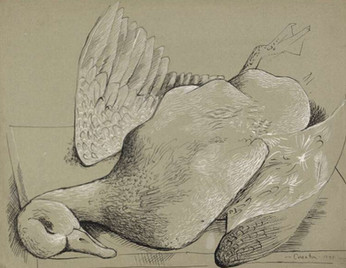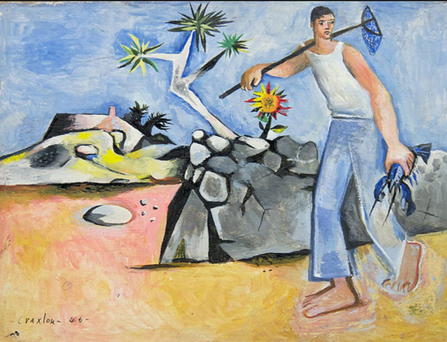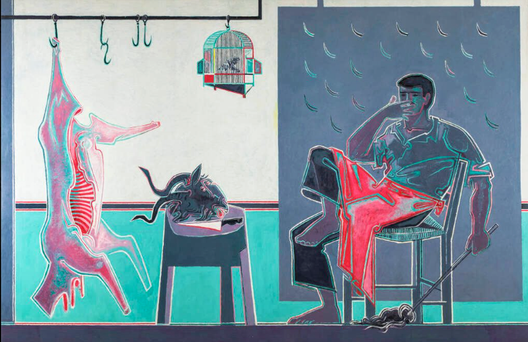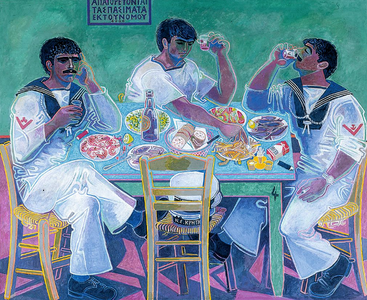A Search for Freedom
- judeevansart2
- Mar 24, 2024
- 2 min read
I recently visited the marvellous Pallant House Gallery in Chichester to see the retrospective exhibition of John Craxton, called A Modern Odyssey. The show traces his career from British Neo-Romanticism to a distinctive kind of Modernism, embracing a variety of influences from Picasso to Pop Art. The exhibition starts with work made by Craxton in the early 1940s – images of melancholic poets in gloomy landscapes that hark back nostalgically to a long-lost English idyll – and ends with a celebration of Mediterranean light and colour. Very much like Van Gogh’s transformation from bleak and dingy Dutch work to the explosion of colour that happened when he discovered Impressionism and moved to the south of France.
The first room of the exhibition contains one of my favourite paintings, Hare on a Table (1944-46), which I had always believed to be by Lucian Freud. Turns out Freud and Craxton (known to his mates as Crackers) had an intense friendship, they were at art college together and had studios close to each other in London. In the 1940s they both made studies of dead animals and their styles seemed to collide at this point. The gallery caption for the dead hare picture says: ‘the hare stands for every deadening thing about Britain that Craxton wanted to leave behind. When they were working together in St John’s Wood, Craxton and Freud sourced dead models from a Camden pet shop. A putrid monkey was hidden in an oven during a visit by the art historian Kenneth Clark.’ Freud and Craxton enjoyed a bohemian lifestyle in Soho together during the blitz. Craxton was gay but also had relationships with women (including Margot Fonteyn); Freud was a notorious womaniser, although he was one corner of a love triangle with John Minton and Adrian Ryan; so Freud and Craxton were probably more than just good friends. At some point they had a major falling out and their friendship ended.
In 1952, Craxton escaped cold and stuffy post-war England and made a home for himself in Chania, a city on the island of Crete. Seduced by the Aegean way of life, his paintings got bigger, brighter and full of energy. He painted pictures of muscular sailors, lithe goatherds and young men lounging in long grass, and it’s hard not to see these works as evidence of his personal liberation as a gay man. Charming and nomadic, Craxton lived for pleasure. At this time, Chania had a new influx of sailors every night and became a known as a great gay cruising ground. Craxton had to leave Chania in 1967 when Greece became a military dictatorship. His fondness for young men in uniform and Hellenistic artefacts led to him being accused of espionage and hoarding illegal antiques.
Craxton did eventually make it back to his beloved Chania and his reputation as an artist was established in Greece before he gained the recognition of the British art establishment with election to the Royal Academy in 1993.
John Craxton: A Modern Odyssey at Pallant House Gallery until 21 April 2023.































Comments